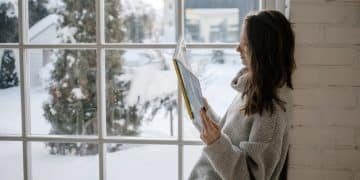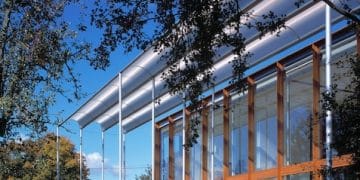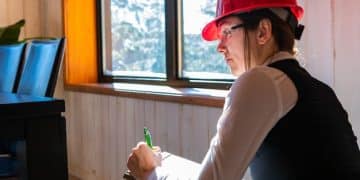Cut AC Costs: Optimize Home Insulation This Summer

Cut Your AC Costs by 30%: Optimize Your Home’s Insulation This Summer by sealing air leaks, adding insulation to attics and walls, and upgrading to energy-efficient windows, significantly reducing energy consumption and lowering utility bills during the summer months.
Want to cut your AC costs by 30%: Optimize Your Home’s Insulation This Summer? Inefficient home insulation leads to significant energy waste, especially during the hot summer months in the US. But don’t worry, we’ve got you covered. Read on to discover how you can make a real difference.
Understanding Home Insulation and Its Impact
Home insulation acts as a thermal barrier, regulating the flow of heat into and out of your home. Proper insulation keeps your house cool in the summer and warm in the winter, significantly reducing your reliance on air conditioning and heating systems.
Poor insulation leads to energy waste, higher utility bills, and uncomfortable indoor temperatures. It’s like trying to cool a house with the windows open – a constant battle against the elements.
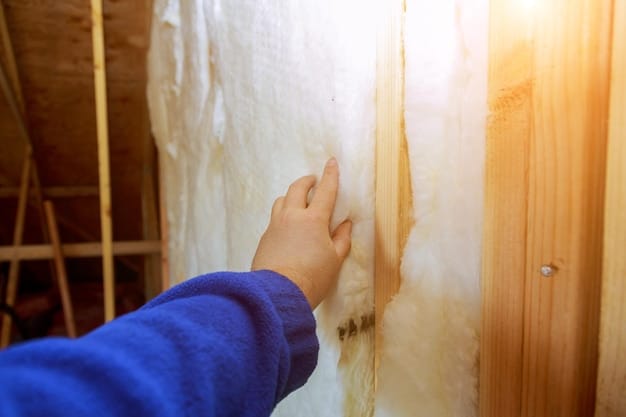
Why Insulation Matters for Energy Efficiency
Effective insulation is crucial for energy efficiency, preventing heat transfer through walls, ceilings, and floors. This helps maintain a consistent indoor temperature, reducing the strain on your AC system.
When your home is well-insulated, your AC doesn’t have to work as hard or as long to keep you comfortable, resulting in significant savings on your energy bills.
- Conserves energy by reducing heat transfer.
- Lowers your monthly utility bills.
- Maintains consistent and comfortable indoor temperatures.
- Reduces wear and tear on your HVAC system.
Investing in good insulation is a smart move that pays off in the long run by reducing energy consumption and promoting a more sustainable lifestyle. Plus, it improves the overall comfort and air quality in your home.
Identifying Areas in Your Home That Need Better Insulation
Identifying poorly insulated areas is the first step toward improving your home’s energy efficiency. Common culprits include attics, walls, basements, and crawl spaces.
Conducting a thorough inspection can help you pinpoint where heat is escaping or entering your home, allowing you to address these issues effectively.
Common Areas to Inspect
Start by checking the attic, as it’s often the area with the most significant heat loss. Look for gaps, thin spots, or areas where insulation is compressed.
Inspect exterior walls, especially around windows and doors, for drafts or cold spots. These areas are prone to air leaks and require extra attention.
- Attics: Often the primary source of heat loss.
- Walls: Especially around windows and doors.
- Basement and Crawl Spaces: Can contribute to overall heat loss or gain.
- Ductwork: Leaky ducts can waste a significant amount of energy.
By addressing these key areas, you can significantly improve your home’s insulation and reduce your AC costs this summer. A well-insulated home is a comfortable and energy-efficient home.
Types of Insulation Materials and Their R-Values
Choosing the right insulation material is essential for maximizing energy efficiency. Different materials offer varying levels of thermal resistance, known as R-value. Understanding these differences can help you make an informed decision.
Common insulation materials include fiberglass, cellulose, spray foam, and mineral wool. Each has its pros and cons, so consider your specific needs and budget when making your choice.
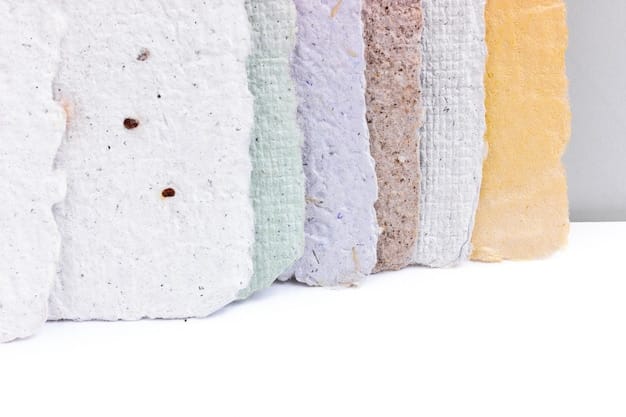
Understanding R-Values
The R-value measures an insulation material’s resistance to heat flow. Higher R-values indicate better insulation performance, providing greater energy savings.
The recommended R-value for your home depends on your climate zone and the area being insulated. Be sure to check local building codes for specific requirements.
- Fiberglass: Affordable, but lower R-value per inch.
- Cellulose: Made from recycled materials, good for filling irregular spaces.
- Spray Foam: High R-value, seals air leaks effectively.
- Mineral Wool: Fire-resistant and eco-friendly.
Selecting the right insulation material with an appropriate R-value is crucial for optimizing your home’s energy efficiency and reducing your AC costs this summer. Consider consulting with a professional to determine the best option for your situation.
DIY vs. Professional Insulation Installation: What’s Right for You?
Deciding whether to DIY your insulation project or hire a professional depends on your skills, budget, and the complexity of the job. While DIY can save money, professional installation ensures proper coverage and performance.
Simple insulation projects, like adding insulation to an accessible attic, can often be tackled by homeowners. However, more complex projects, like insulating walls or crawl spaces, may require professional expertise.
Factors to Consider
Assess your comfort level with DIY projects and the time you’re willing to invest. Consider the potential risks of improper installation, such as inadequate coverage or air leaks.
Weigh the cost savings of DIY against the benefits of professional installation, including expertise, equipment, and guarantees.
- DIY: Cost-effective for simple projects, requires time and effort.
- Professional: Ensures proper installation, provides expertise and guarantees.
- Complexity: Wall and crawl space insulation often require professional help.
- Safety: Handling insulation materials requires protective gear.
Choosing the right approach is essential for achieving optimal insulation performance and reducing your AC costs this summer. If in doubt, consulting with a professional can provide valuable guidance and peace of mind.
Sealing Air Leaks: A Complementary Approach to Insulation
Sealing air leaks is a crucial step in maximizing your home’s energy efficiency. Air leaks allow conditioned air to escape and outside air to enter, negating the benefits of even the best insulation.
Common sources of air leaks include gaps around windows and doors, cracks in walls, and openings for pipes and wiring. Addressing these leaks is a cost-effective way to improve your home’s thermal performance.
Effective Sealing Techniques
Use weatherstripping and caulk to seal gaps around windows and doors. Expandable foam can be used to fill larger gaps and cracks in walls.
Inspect and seal any openings for pipes, wiring, and other penetrations. Pay attention to areas where different building materials meet, as these are often prone to air leaks.
- Weatherstripping: Seals gaps around windows and doors.
- Caulk: Fills cracks and small openings.
- Expandable Foam: Seals larger gaps and cracks.
- Sealing Penetrations: Around pipes and wiring.
By combining effective air sealing with proper insulation, you can create a tight thermal envelope that significantly reduces your AC costs this summer. A well-sealed home is a comfortable, energy-efficient home.
Maintaining Your Home’s Insulation for Long-Term Savings
Proper maintenance is essential for preserving the effectiveness of your home’s insulation over time. Regular inspections can help you identify and address any issues before they lead to significant energy loss.
Look for signs of damage, such as water stains, mold growth, or compressed insulation. Addressing these problems promptly can prevent further deterioration and ensure long-term energy savings.
Regular Inspection Tips
Inspect your attic and crawl spaces annually for signs of moisture or damage. Check for gaps or thin spots in the insulation and address them as needed.
Ensure that vents are clear and functioning properly to prevent moisture buildup. Proper ventilation is crucial for maintaining the integrity of your insulation.
- Annual Inspections: Check for moisture, damage, and gaps.
- Ventilation: Ensure proper airflow to prevent moisture buildup.
- Address Damage: Repair or replace damaged insulation promptly.
- Maintain Seals: Regularly check and repair weatherstripping and caulk.
By following these maintenance tips, you can ensure that your home’s insulation continues to perform optimally, reducing your AC costs for years to come. A well-maintained home is an energy-efficient and comfortable home.
| Key Point | Brief Description |
|---|---|
| 💡 Insulation is Key | Proper insulation reduces heat transfer, lowering energy bills. |
| 🏠 Inspect Areas | Check attics, walls, and basements for poor insulation. |
| 💰 Choose Wisely | Select insulation materials based on R-value and budget. |
| 🛠️ Seal Leaks | Seal air leaks around windows and doors to complement insulation. |
Frequently Asked Questions
▼
The ideal R-value for attic insulation varies by climate zone, but generally ranges from R-30 to R-60. Check local building codes for specific recommendations.
▼
It’s recommended to inspect your home’s insulation at least once a year, paying close attention to areas prone to moisture or damage.
▼
Simple insulation projects, like adding attic insulation, can be DIY. However, complex jobs like wall insulation are best left to professionals.
▼
Sealing air leaks prevents conditioned air from escaping, reducing energy waste and improving the effectiveness of your insulation efforts.
▼
Consider factors like R-value, cost, environmental impact, and ease of installation when selecting insulation materials. Your specific needs will dictate the best choice.
Conclusion
Optimizing your home’s insulation is a smart investment that can significantly cut your AC costs by 30%: Optimize Your Home’s Insulation This Summer. By understanding the importance of insulation, identifying areas that need improvement, and taking the necessary steps to seal air leaks and maintain your insulation, you can create a comfortable, energy-efficient home that saves you money for years to come.
